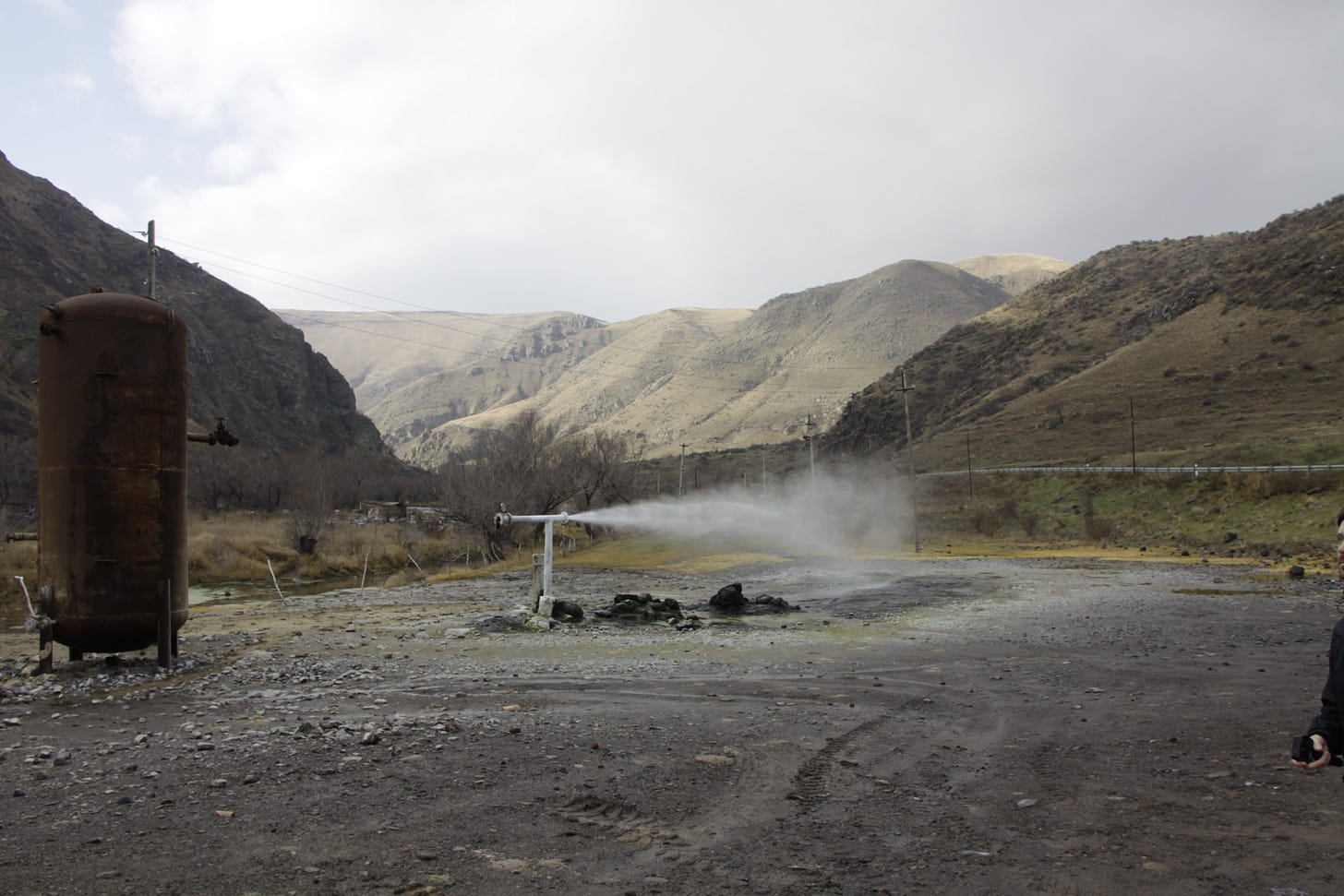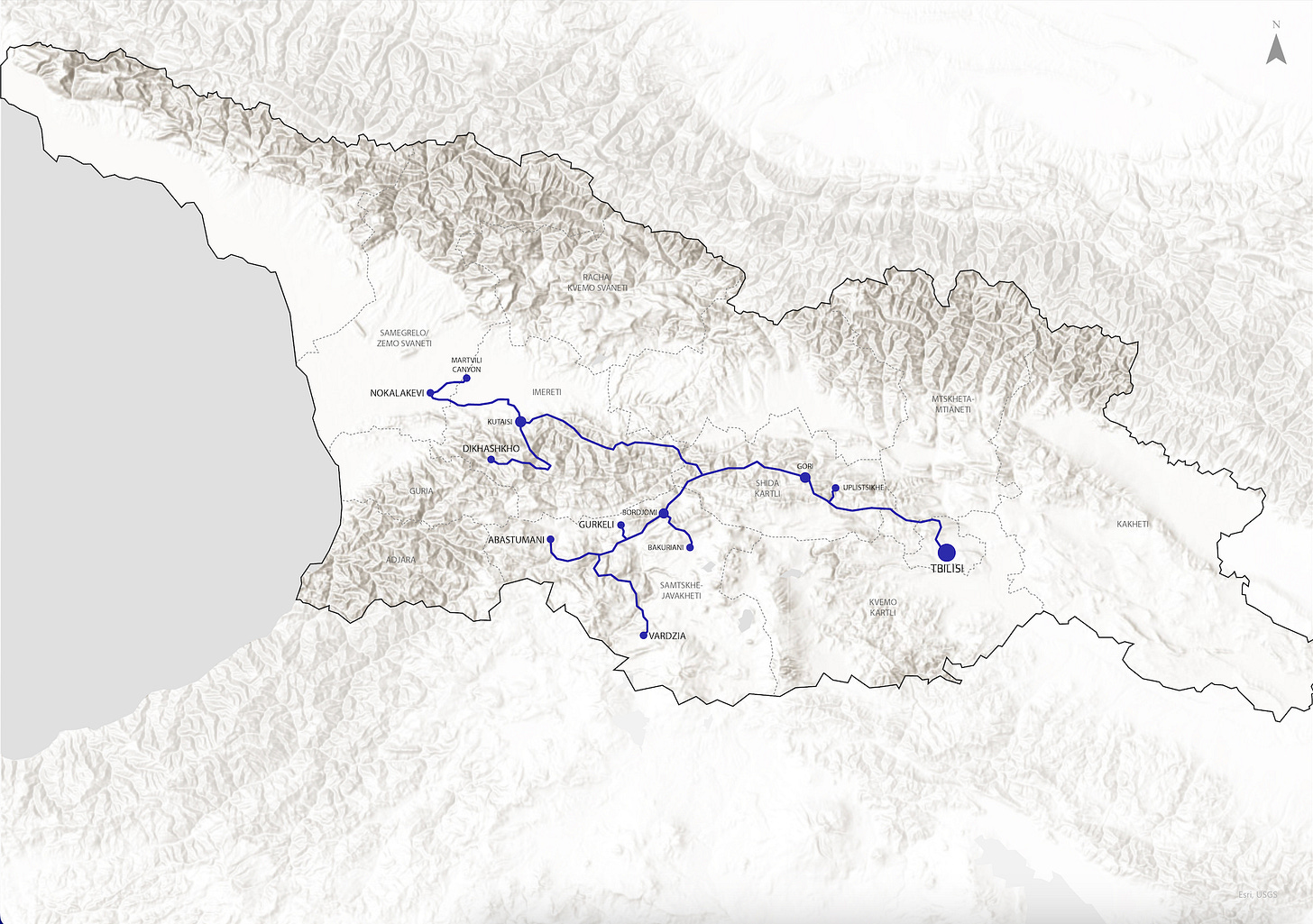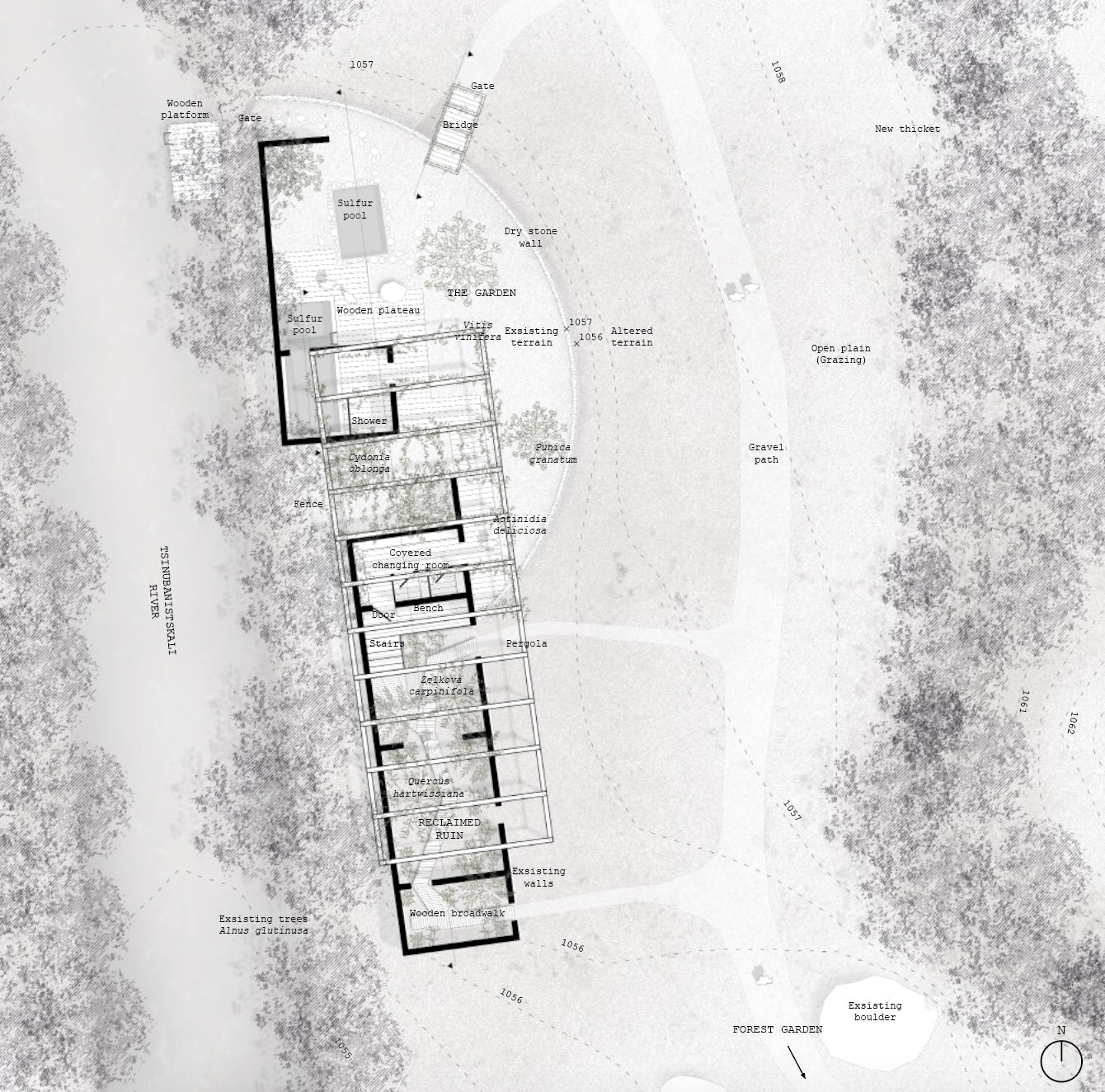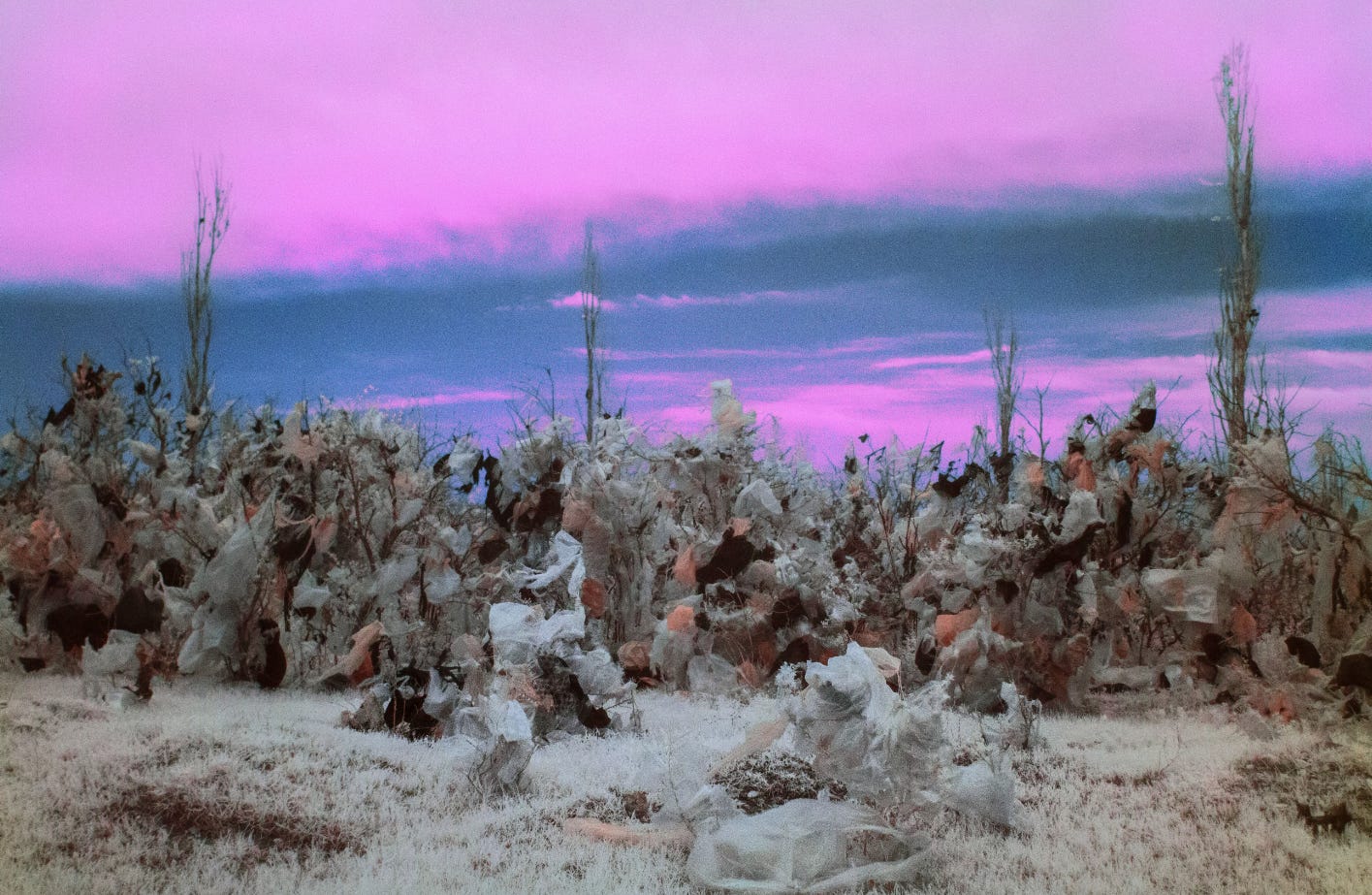This is a study project by the three landscape architecture students from University of Copenhagen Frederik Aunsberg, Frederik Volf and Johannes Harder. The project came to life through a common interest and urge to explore places that were distinctively different from the framework which we had previously worked with in Denmark. Through recommendations and research, we quickly found that Georgia contained all the qualities we were looking for, and we ended up contacting Ruderal. After a dialog with Sarah Cowles and an introduction to this intriguing and almost completely unexploited natural resource, the geothermal landscapes in Georgia, the framework for the project was set.
We arrived in Tbilisi at the beginning of December 2023. After spending a few days in the capital exploring the city, visiting Ruderal’s studio, and arranging meetings and interviews, we left the city to start exploring the rural and geothermal landscapes in Georgia and the sulfur baths located all over the country.
We rented a car for the journey to Kutaisi, Borjomi and Akhaltsikhe. We went on foot for shorter distances and further explorations of cities, villages, and nature parks.
In our study, we took a hands-on approach to understanding the landscape. Visual documentation played a big role, as we utilized photography and videography to create a detailed visual record. We gathered insights and knowledge from locals and experts. We noted down plant registrations, sketched the landscape, enabling us to capture immediate impressions, key features, and design ideas, and did spatial investigations on-site.
Sulfur baths in Georgia
During our study trip, we visited seven sulfur baths, each offering a unique experience. We encountered a wide spectrum of settings from highly commercial spa ventures in Tbilisi to almost abandoned ruins like the one in Gurkeli. Overall, there was considerable variation in staffing, opening hours, costs, and amenities such as changing rooms and toilets. Additionally, the water temperature varied significantly. Below, a gallery featuring selected photos shows our diverse sulfur bath visits.
Gurkeli became the chosen site for our final design proposal: Gurkeli Sulfur Bath. Our aim is to showcase a model for revitalizing Georgia's abandoned natural sulfur baths, emphasizing ecotourism as a key focus.
Gurkeli Sulfur Bath:
Revitalizing neglected recreation
Gurkeli Sulfur Bath is located ideally for promoting ecotourism. It is situated in the lesser Caucasian Mountain range, surrounded by the Borjomi-Kharagauli National Park. It lies in the borders between civilization and untamed nature. There are many existing hiking trails in the national park. Therefore, it makes sense to connect them to Gurkeli Sulfur Bath while also creating new smaller ones that range from a day trip to a couple of hours. This means you can reach the bath from a longer trip through the park and rest your sore muscles in the sulfur bath. The only other way to get there is through Gurkeli village, which lies 3,8 km south of the bath. You can now hike to the bath or drive and park your car some 100-200 m from the bath.
In our design proposal, we have been inspired by The Transcaucasian Trail’s approach to ecotourism. Therefore, the revitalization of Gurkeli Sulfur Bath will be done in collaboration with the locals of Gurkeli. They will be involved in creating the hiking trails, building the new structures, and maintaining the area. Furthermore, they can benefit economically from this by renting guest houses for visitors, selling food and beverages, and facilitating hiking trips.
New hiking trails will be established to connect Gurkeli Sulfur Bath with the surrounding landscape and some of the close existing long-distance hiking trails. Our approach for new hiking trails is to use already existing trails as much as possible. The locals, shepherds, and other explorers might have used these trails. Establishing the new trails requires some renovation and improvements, including clearing undergrowth and fallen trees, relocating eroded trails, and building bridges.
New interventions, such as a platform framing a view over the characteristic landscape, will be established. These interventions aim to enhance the connection between hikers and nature. By strategically framing captivating views, this initiative reflects our aim to enhance the overall recreational experience, encouraging a harmonious interaction between hikers and the scenic landscapes they explore. The platforms offer the opportunity to facilitate a resting area or lunch stop during a hike or as a destination for a short one-day hike.
To enhance the awareness of the landscape, nature, and environment, we will install information boards at strategic locations within the area and along the trails. These boards will provide detailed information about the specific characteristics of the landscape, ecotypes, and unique vegetation in the current area. The goal is to educate hikers, offering insights that enhance their understanding of the environment and foster a stronger awareness of the importance of conserving natural habitats and biodiversity.
The concept for the revitalization of the Gurkeli Sulfur Bath is built around a foundation of a handful of simplistic design interventions. We are keeping the outer walls of the existing ruin but removing the roof. To frame the deteriorating building, we are creating a wooden exoskeleton that aims to highlight the manmade structure and its contrast to the surroundings. Parts of the ruin will be left to natural succession, while the rest are transformed into a maintained garden-esque area, with wooden floors and new fruit trees.
The two areas will also vary in level to emphasize the transition. The existing 8x3m concrete pool is downsized to 4x2m and partly moved inside the ruin's walls. An additional smaller and shallower pool is added, with a more nature-inspired appearance. To keep out grazers and stray dogs, the outlying terrain is lowered to match the level of the former pools and the area is constrained by a drystone “Ha-Ha wall”. Smaller installments such as changing cubicles, a shower, and a wooden interior serve to make the bath more visitor-friendly.
Read on Substack









